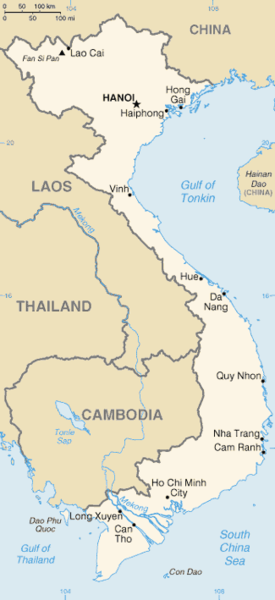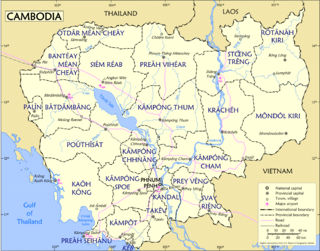
Trafficking of children is a form of human trafficking and is defined by the United Nations as the "recruitment, transportation, transfer, harboring, and/or receipt" kidnapping of a child for the purpose of slavery, forced labour and exploitation. This definition is substantially wider than the same document's definition of "trafficking in persons". Children may also be trafficked for the purpose of adoption.

Sex trafficking is human trafficking for the purpose of sexual exploitation. It has been called a form of modern slavery because of the way victims are forced into sexual acts non-consensually, in a form of sexual slavery. Perpetrators of the crime are called sex traffickers or pimps—people who manipulate victims to engage in various forms of commercial sex with paying customers. Sex traffickers use force, fraud, and coercion as they recruit, transport, and provide their victims as prostitutes. Sometimes victims are brought into a situation of dependency on their trafficker(s), financially or emotionally. Every aspect of sex trafficking is considered a crime, from acquisition to transportation and exploitation of victims. This includes any sexual exploitation of adults or minors, including child sex tourism (CST) and domestic minor sex trafficking (DMST).

India has a very high volume of child trafficking. As many as one child disappears every eight minutes, according to the National Crime Records Bureau. In some cases, children are taken from their homes to be bought and sold in the market. In other cases, children are tricked into the hands of traffickers by being presented an opportunity for a job, when in reality, upon arrival they become enslaved. In India, there are many children trafficked for various reasons such as labor, begging, and sexual exploitation. Because of the nature of this crime; it is hard to track; and due to the poor enforcement of laws, it is difficult to prevent. Due to the nature of this crime, it is only possible to have estimates of figures regarding the issue. India is a prime area for child trafficking to occur, as many of those trafficked are from, travel through or destined to go to India. Though most of the trafficking occurs within the country, there is also a significant number of children trafficked from Nepal and Bangladesh. There are many different causes that lead to child trafficking, with the primary reasons being poverty, weak law enforcement, and a lack of good quality public education. The traffickers that take advantage of children can be from another area in India, or could even know the child personally. Children who return home after being trafficked often face shame in their communities, rather than being welcomed home.
Rates of crime in Guatemala are very high. An average of 101 murders per week were reported in 2018. The countries with the highest crime and violence rates in Central America are El Salvador and Honduras. In the 1990s Guatemala had four cities feature in Latin America's top ten cities by murder rate: Escuintla, Izabal (127), Santa Rosa Cuilapa (111) and Guatemala City (101). According to New Yorker magazine, in 2009, "fewer civilians were reported killed in the war zone of Iraq than were shot, stabbed, or beaten to death in Guatemala," and 97% of homicides "remain unsolved." Much of the violent nature of Guatemalan society stems back to a 36-year-long civil war However, not only has violence maintained its presence in the post-war context of the country following the Guatemalan Civil War, but it has extended to broader social and economic forms of violence.
Sex trafficking in Thailand is human trafficking for the purpose of sexual exploitation and slavery that occurs in the Kingdom of Thailand. Thailand is a country of origin, destination, and transit for sex trafficking. Child prostitution in Thailand is a problem. In Thailand, close to 40,000 children under the age of 16 are believed to be in the sex trade, working in clubs, bars, and brothels.
Human trafficking is an act of recruiting, transporting, and harboring people against their will; usually by using force. People who are trafficked are mostly used for sexual purposes or illegal work. These acts include: forced marriages, trafficking for human organs, and gaining members for organized crimes. Every country in the world deals with this crime, and are usually classified as transit countries, target countries, or source countries. Guatemala is a part of North America, which is a target country; this means they contain human trafficking victims.
Human trafficking is the trade of humans, most commonly for the purpose of forced labour, sexual slavery, or commercial sexual exploitation for the trafficker or others. Mexico is a large source, transit, and destination country for victims of human trafficking.
El Salvador is a source, transit, and destination country for women and children who are subjected to trafficking in persons, specifically forced prostitution and forced labor. Most victims are Salvadoran women and girls from rural areas who are forced into commercial sexual exploitation in urban areas, though some adults and children are subjected to forced labor as agricultural workers and domestic workers. The majority of foreign victims are women and children from neighboring countries, such as Honduras, Nicaragua, and the Dominican Republic, who migrate to El Salvador in response to job offers, but are subsequently forced into prostitution or domestic servitude. Trafficking offenders use fraudulent documentation to facilitate the movement of foreign victims. Salvadorans have been subjected to forced prostitution in Guatemala, Mexico, Belize, the United States, Spain, and Italy.

Human trafficking in Texas is the illegal trade of human beings as it occurs in the state of Texas. It is a modern-day form of slavery and usually involves commercial sexual exploitation or forced labor, both domestic and agricultural.
Human Trafficking or "trafficking in persons" is the recruiting, harboring, transporting, providing, or obtaining a person for mainly the purposes of forced labor or prostitution. Other reasons for human trafficking are the removal of organs, forced marriage, and other exploitations. South America is one of the biggest source and destination locations in the world and has struggled with the issue for many years. The ILO estimates that of the 20.9 million victims of human trafficking in 2012, 1.8 million were from Latin America. There are many factors that cause human trafficking, like a high demand for domestic servants, sex laborers, and factory workers, the existence of already established trafficking networks that often take advantage of young women and children, corruption in the governments and local law enforcement agencies, a governmental disinterest in the issue and a lack of opportunity for women in South American regions where trafficking occurs. People exploited in human trafficking are often impoverished, members of indigenous peoples, unemployed, victims of abuse, illiterate, substance users, homeless, or involved in gang activity. Research by the United States Department of State has also found that LGBTQ+ and transgender people are vulnerable to human trafficking. By far, sex trafficking is the leading type of human trafficking, making up 79 percent of all human trafficking. This is then followed by forced labor at 18 percent. About 20 percent of trafficking victims are children. Primary destinations for trafficking and illegal immigration are the United States, Spain, Britain, Italy, the Netherlands, Portugal, and Canada. Globalization, capitalism and societal attitudes facilitate and reduce the barriers to human trafficking.
Sex trafficking in China is human trafficking for the purpose of sexual exploitation and slavery that occurs in the People's Republic of China. China, the world's second-most populous country, has the second highest number of human trafficking victims in the world. It is a country of origin, destination, and transit for sexually trafficked persons.

Sex trafficking in Vietnam is human trafficking for the purpose of sexual exploitation and slavery that occurs in the Socialist Republic of Vietnam. Vietnam is a source and, to a lesser extent, destination country for sexually trafficked persons.

Sex trafficking in Cambodia is human trafficking for the purpose of sexual exploitation and slavery that occurs in the Kingdom of Cambodia. Cambodia is a country of origin, destination and transit for sex trafficked persons.

Sex trafficking in Taiwan is human trafficking for the purpose of sexual exploitation and slavery that occurs in the Republic of China. Taiwan is a country of origin, destination, and transit for sexually trafficked persons.

Sex trafficking in Mongolia is human trafficking for the purpose of sexual exploitation and slavery that occurs in the country. Mongolia is a source, transit and destination country for sexually trafficked persons.

Sex trafficking in Brunei is human trafficking for the purpose of sexual exploitation and slavery that occurs in the country.

Sex trafficking in East Timor is human trafficking for the purpose of sexual exploitation and slavery that occurs in the Democratic Republic of Timor-Leste.
Sex trafficking in Mexico, or human trafficking, is the illegal practice of sexual exploitation of human beings in the United Mexican States. Sex trafficking is considered a form of modern-day slavery because of its attempt to recruit, entice, transport, or coerce someone into non-consensual sexual acts for personal gain. Mexico is an origin, transit, and destination for sex trafficking, a global industry that earns profits of approximately 150 billion a year.

Sex trafficking in El Salvador is human trafficking for the purpose of sexual exploitation and slavery that occurs in the Republic of El Salvador. It is a country of origin, transit, and destination for sexually trafficked persons.
Over time, there has been an increase in sex trafficking in Central America. Because of the lack of financials, work opportunities and studies, women and men see sex work as the solution to their problems. In addition, the living conditions, poverty, and gang violence are the reason as to why a lot of people have been coerced into sex trafficking. These countries are working with their government and other countries in order to create laws to fight against sex trafficking.











